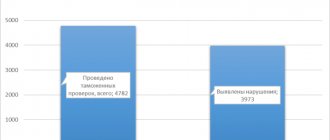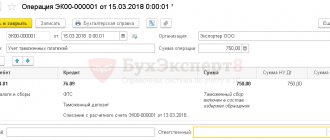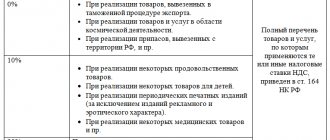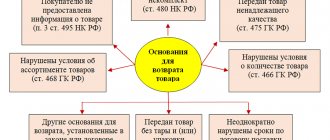Temporary import is a special customs clearance regime. It is used for goods that are imported into the territory of the Russian Federation only for a certain time. With such imports, payment of duties, taxes, and other obligatory payments is carried out partially. The amount of payments depends on how long the cargo will stay on the territory of the vehicle and according to clause 3 of Art. 223 of the EAEU Labor Code is 3% of the total amount of mandatory payments for each calendar month (full or incomplete).
There are several categories of goods that are generally exempt from mandatory payments for temporary import. Their list is determined by the Decision of the EAEU Commission No. 331 of June 18, 2010 and the Decision of the EEC Council No. 109 of December 20, 2017. Preferential conditions are provided for containers and other reusable packaging, goods supplied as part of international assistance, goods that will be used for cultural or scientific purposes, to promote international cooperation or conduct foreign trade activities. If during such import the cargo is exempt from mandatory payments, the terms of its stay in the customs territory of the Customs Union, as well as the conditions of its use, must comply with the Decision of the EAEU Commission No. 331 of June 18, 2010.
There are several product groups for which the temporary import regime cannot be applied:
- food products, drinks;
- tobacco, alcohol products;
- raw materials, blanks, semi-finished products;
- consumables, samples;
- waste.
In these groups there are certain types of goods for which exceptions are possible, provided that their import is carried out for use as exhibition or industrial designs. Goods prohibited for import into the territory of the EAEU cannot be imported under the temporary import procedure.
Conditions for temporary import
It is possible to temporarily import products into the territory of the EAEU or the Russian Federation only if the following conditions are met:
- Possibility of identification both during import and subsequent re-export. This is necessary to ensure that the same cargo is imported and then exported;
- compliance with the restrictions established by Art. 7 TC EAEU. These are measures of sanitary, veterinary, phytosanitary control, non-tariff regulation;
- payment of mandatory payments. This is partially carried out and is calculated based on the length of stay of the cargo in the customs territory of the EAEU. If goods exempt from payments are imported, the conditions for applying the benefits are observed;
- in cases provided for by Federal Law No. 289 of August 3, 2018, they pay compensatory, special and other duties, taxes, and other additional payments.
The temporary import regime has the following features.
Time limit. Goods can only be imported for a certain period. Usually it does not exceed 2 years (Clause 1 of Article 221 of the EAEU Labor Code). It must be determined at the time of import. When calculating the period for which the cargo is imported, the purposes and circumstances of the import are taken into account. For some product groups, the deadline may be more or less than two years. If the period of stay of goods on the territory of the EAEU needs to be extended, the declarant must submit a corresponding application before its expiration. If the period of temporary import established at the time of import is less than the deadline (two years), an extension is possible after it is completed (within one month, provided that the deadline is met). The established time limits apply to the cargo, even if it has been repeatedly imported and exported.
Order of use. For imported products, modernization or major repairs, as well as any other changes that affect the characteristics, are not allowed. The condition of the goods must be unchanged. It is only permitted to perform actions that are necessary to ensure the safety of the cargo. At the same time, the possibility of identification must be preserved.
When using temporarily imported products you can:
- carry out its maintenance and routine repairs in order to maintain its original condition;
- conduct research, tests, experiments using or in relation to imported products;
- if the import was carried out for transport, it can be used for international transport.
Possession. For temporary import Art. 279 of the EAEU Labor Code requires that the cargo remain in the possession of the declarant. It can only be transferred to other persons for storage, maintenance or routine repairs, testing and testing. The exception is returnable packaging, which is transferred along with the main shipment. In other cases, goods can be transferred to third parties only after notification of the customs service or with its permission. To obtain a permit, they submit an application and pay mandatory payments for the period elapsed from the moment of import. The person receiving the goods also assumes responsibility for complying with the requirements of the temporary import regime.
Reporting. The procedure for its provision is determined by order of the Federal Customs Service of the Russian Federation No. 592 dated April 4, 2019. Deadlines for submitting reports are until January 15 and July 15 (reporting documents are submitted every six months). If the temporary import regime for a product ceased to operate in the past six months, reporting on it is submitted to the customs service within the established time frame.
Return of seized goods after completion of the administrative case. Risks and recommendations
In our practice of handling cases of administrative offenses, we often encounter situations where, after the completion of a case, a participant in foreign economic activity, often a carrier, is faced with a dilemma - what to do with goods previously seized as security in an administrative case.
This publication is devoted to the problems that arise in connection with the return of goods for which there is no interest in returning.
To begin with, let us outline the problematics of the issue.
As is known, in Chapter 16 of the Code of the Russian Federation on Administrative Offences, concerning violations of customs rules, a number of articles provide for the confiscation of items of an administrative offense as a main or additional type of punishment.
Taking this into account, when initiating an administrative case, customs authorities, as a rule, apply a security measure in the form of seizure or seizure of goods. Including, under the article on providing false information about goods upon arrival/departure (Part 3 of Article 16.1 of the Code of Administrative Offenses of the Russian Federation), the subject of which is most often the carrier.
In this publication, we will consider the consequences of a situation where, based on the results of the consideration of the case by customs or the court, the penalty in the form of confiscation is not applied. In this case, the reasons for this decision do not matter: the absence of an offense or simply the application of a different type of punishment.
The main consequence is that the goods, in accordance with the resolution in the case of an administrative offense, must be returned for customs clearance to the person from whom it was seized.
This situation entails two problems, the importance of which an interested foreign trade participant is not always able to fully appreciate in advance:
- Financial and organizational costs for export and customs clearance of goods.
- Consequences of failure to take measures for the export and customs clearance of goods in the form of administrative liability and possible losses.
As for the first problem, we will not dwell on it in detail, since we have already discussed this issue quite fully in one of the previous publications.
Let us only note that the amount of expenses incurred and effort expended often exceeds the value of the product itself or significantly reduces this value for the foreign trade participant.
The second problem should be given closer attention, since the new customs legislation (EAEU Customs Code, which entered into force on January 1, 2018) differently defines the process of customs clearance of goods previously seized as the subject of an administrative offense
.
The changes, in turn, affected what liability a foreign trade participant may bear for his inaction if he:
- is unable to process returned goods;
- doesn't know how to do it;
- does not want to register the goods due to inexpediency and agrees to their conversion into state property.
Until 2021, the person to whom the goods were returned was required to either declare the goods or place them in temporary storage within 30 days after the regulation came into force. Accordingly, if these obligations were not fulfilled, the participant in foreign economic activity faced liability for failure to comply with the deadline for filing a customs declaration under Part 4 of Art. 16.12 of the Code of Administrative Offenses of the Russian Federation (fine from 10 to 50 thousand rubles), and in the case of placing goods in temporary storage - under Art. 16.16 of the Code of Administrative Offenses of the Russian Federation for violating the terms of temporary storage (fine from 50 to 100 thousand rubles).
According to the new rules that are in force today, changing the status of unclaimed goods after the decision on an administrative case comes into force can be divided into several stages:
I. Possibility of placing goods in temporary storage.
This stage begins on the day the resolution comes into force and lasts for 10 calendar days (clause 4 of article 98 of the EAEU Labor Code).
After this period, the opportunity to register the goods (placement for temporary storage or declaration) is not lost, but the grounds for detaining the goods, provided for by the EAEU Labor Code, arise.
II. Detention of goods by the customs authority.
Goods not placed in temporary storage within the above period are detained by the customs authority in accordance with Chapter 51 of the EAEU Labor Code (clause 5 of Article 98, Article 379.380 of the EAEU Labor Code), of which a protocol is drawn up and sent to the foreign trade participant.
Storage of detained goods continues to be carried out by customs authorities for 30 calendar days (for perishable goods - 24 hours).
III. Sale, use or destruction of unclaimed goods.
Expenses of customs authorities for transportation (transportation), reloading (loading, unloading), storage, and other expenses associated with preparation for sale and sale of detained goods are covered from amounts received from sales.
If the sale of goods is impossible or impractical, another decision may be made regarding the goods, including its destruction.
Costs not covered by the amount received from sales, as well as costs of destruction of goods, may be assigned to the foreign trade participant who has not fulfilled his obligations to timely clear the goods.
Also, failure to place goods in temporary storage within 10 days from the date of entry into force of the decision in the administrative case is a direct violation of the obligation established by clause 4 of Art. 98 of the EAEU Labor Code, and it can be qualified by the customs authority as a violation of the established requirements and conditions for placing goods in a temporary storage warehouse under Art. 16.14 Code of Administrative Offenses of the Russian Federation (fine from 5 to 20 thousand rubles).
We, for our part, suggest that carriers and other participants in foreign trade activities who find themselves in the situation described above, in order to minimize the negative consequences, adhere to the following recommendations:
- Assess your organizational and financial capabilities for the export and customs clearance of goods;
- Contact and agree on the issue of refusal of the goods or covering the costs of its registration with its owner and other interested parties;
- As part of the consideration of a case of an administrative offense, notify the customs office/court of the absence of intention to carry out customs clearance of the goods;
- Take measures to impose punishment in the form of confiscation of goods in an administrative case;
- Immediately after the decision on the administrative case comes into force, if the goods are not confiscated, re-notify customs of the refusal of the goods;
- In case of initiation of an administrative case under Art. 16.14 of the Code of Administrative Offenses of the Russian Federation, subject to the fulfillment of other recommendations, refer to the absence of guilt in committing an offense.
In some cases, the measures listed do not guarantee the complete absence of negative consequences.
However, understanding the possible consequences and foresight are your main weapons in making the right decisions.
Good luck on the roads!
You will learn more about the secrets of safe international transportation in our group “PROTECTION OF INTERNATIONAL CARRIERS”
on Facebook and VKontakte, as well as in the weekly updated Questions and Answers and Publications sections on our website.
Alexey ZiminLawyerLegal
Published 10/30/2018
- Help is needed?
How to get a pass to the Moscow Ring Road?
How to protect your business when working with China?
How to check a counterparty?
How to draw up a contract correctly?
How to appeal a fine in the European Union?
How to fill out the Transportation Permit correctly?
How to get your money for unpaid freight?
How to quickly consult with YURVEST 24/7?
How to return goods detained by customs in an administrative matter?
Rostransnadzor. How to avoid a fine of 200,000 rubles?
How to obtain a force majeure certificate in China/EU?
How to check prohibitions and restrictions during transit and import of goods?
How to reduce your company's foreign trade costs by 30%?
Sanctions audit. How to bring a product to the US market?
How to register a trademark in TROIS?
How to appeal a customs decision on the classification of goods?
How to get a preliminary class decision?
How to draw up a foreign trade contract correctly?
How to avoid a large fine for violating currency control?
Subscribe to our newsletter on Instagram, Facebook, VKontakte, Telegram right now and be the first to find out the answers to your questions!
Share
Documents for customs clearance for temporary import under Art. 37 TC EAEU
To use this mode, legal entities and individual entrepreneurs need an expanded set of documents:
- statement. In the application for temporary import, it indicates the expected period of stay of the products on the territory of the EAEU, as well as the circumstances and purposes of import;
- letter of guarantee for return export. Establishes obligations for re-export of temporarily imported goods;
- invoice;
- technical passport or technical description of the product;
- packing list;
- information and documents necessary to identify the goods;
- waybill;
- documents confirming payment of customs clearance fees.
The customs authority may request information and documents not included in the main list. will help prepare documents and ensure customs clearance of goods during the temporary import procedure.
General provisions
Previously, the Customs Code of the Customs Union (TC CU) was applied in Russia, but on January 1, 2021, the Agreement on the new Customs Code of the Eurasian Economic Union (TC EAEU) dated April 11, 2017 came into force.
Customs procedures are defined in section 4 of the EAEU Customs Code. These norms determine the requirements and conditions for the use and (or) disposal of goods on the territory of the Customs Union or outside its borders, in accordance with Article 2 “Definitions” of the EAEU Labor Code.
Note. The EAEU includes Russia, Belarus, Kazakhstan, Armenia, and Kyrgyzstan.
To export domestic products abroad (export) or import foreign goods (import, customs transit), an understanding of the specifics of all procedures is required. Without it, a participant in foreign economic activity (FEA) will not be able to fill out a declaration and calculate the amount of payments. To do this, first of all, it is important to familiarize yourself with Chapter 19 “General Provisions on Customs. procedures" of the EAEU Labor Code.
Participants in foreign economic activity are individuals, legal entities or individual entrepreneurs. Items may be transported in accompanied or unaccompanied baggage (via a carrier or by international post). They are processed in specialized places: temporary storage warehouses (TSW), electronic declaration centers (EDC), border checkpoints.
From the moment the declaration or application for the release of goods is submitted until its submission, the cargo is placed under the customs procedure. This is done on the day the products are released from customs.








